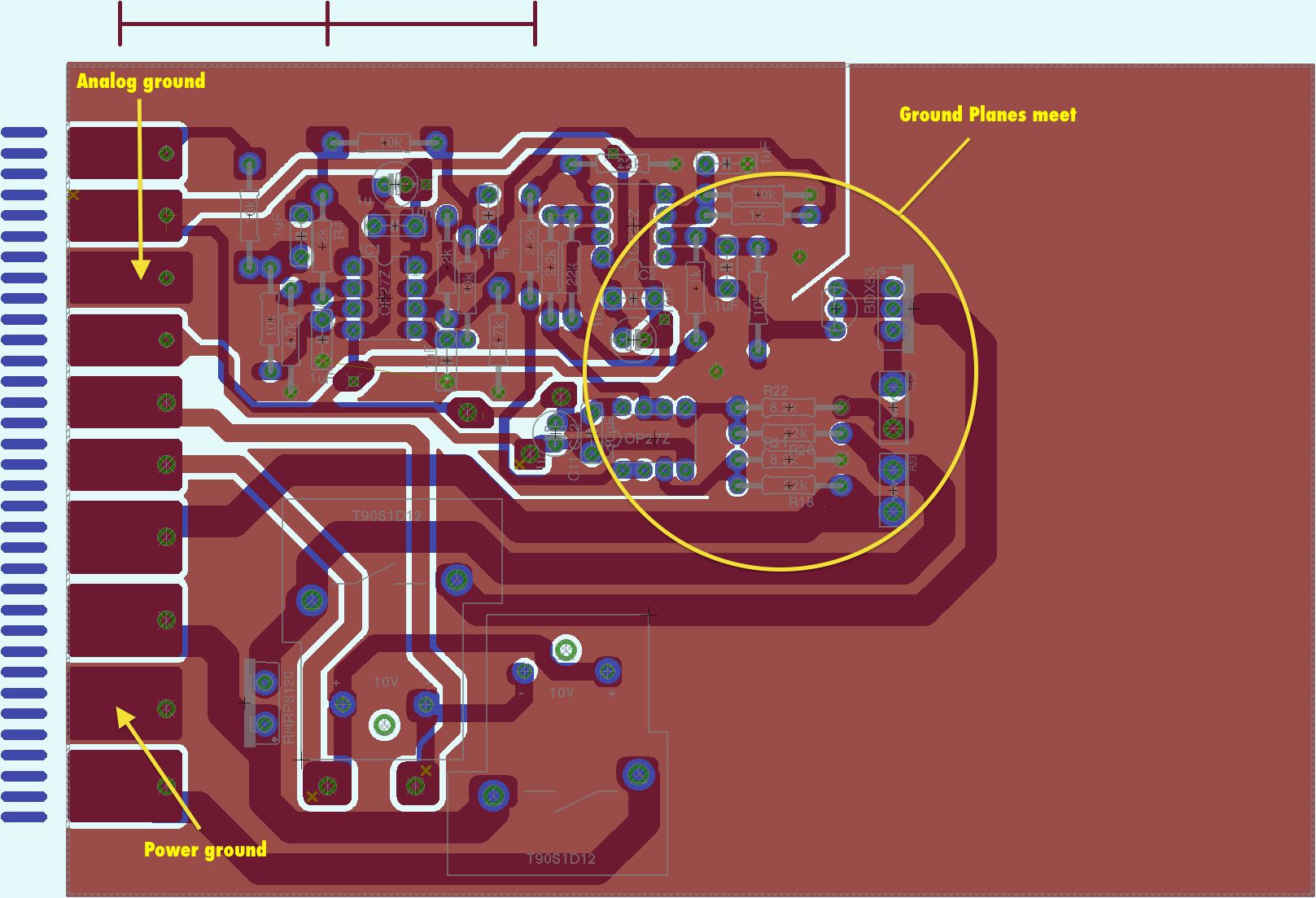General, quoting & support.
Add: Building E, No.58, Nanchang Road, Xixiang , Baoan District Shenzhen City, Guangdong, China
Tel : 0755-27348887
Fax : 0755-27349876
E-mail : svc@pcbastore.com
2021 Detail Guide for PCB Ground Plane
Simon / 2021-04-26
Contents [hide]
Focusing on developing a solid foundation for your project is the key to making it succeed. Without a sturdy foundation, then the project can be subject to failure. This pertains to different fields, including construction concepts, education, career, and relationships. Certainly, PCBs have a solid foundation, which can be confirmed by how the PCB materials are configured on the board. Another essential and solid foundation is the PCB ground plane. If the ground plane is not carefully designed on the board, it will be hard for the board to work well. Alternatively, the board might get subjected to different interferences and electrical noise. That said, let's understand what PCB ground entails, why it is crucial, techniques, and PCB grounding rules.

What Is A PCB Ground?
A PCB ground is a body that represents a customary return path of the electric current from different devices. Basically, it is perceived to be a zero-potential node, whereas other voltage systems are identified with regard to this kind of node. Some nodes considered to be grounds include floating grounds, chassis ground, virtual ground, earth ground, and AC ground.
The name ground in the electronic world refers to the name provided to a specific circuit point. For instance, if you have a circuit containing a single battery with a negative and a positive terminal, the ground can be the negative terminal.
You will find some circuits having connections referred to as negative, positive, and the ground. In such cases, the center between the positive terminal and negative terminal is known as the ground. The ground is measured in voltage, which means that your ground will read 6 volts when the voltage is twelve.
Most professionals consider the ground to be zero, with the negative terminal being -6V and the positive terminal 6v. Professionals find it easy to measure the voltage between these points, and ostensibly, there is yet a variance of twelve between -6V and 6V.
The grounding techniques must be appropriately exercised since wrong utilization can substantially minimize the system's performance. You need to control different grounding factors, including signal return voltage and/or spurious ground, that can deteriorate the performance. Typical current, external signal coupling, among other problems, can lead to these voltages. The solutions to these uncouth voltages can be properly sizing and routing conductors, utilizing ground techniques of isolations, and using unique signal handling techniques.
Why is the PCB Ground Plane Important?
The PCB ground plane plays a vital role in the board. It comprises a broad section of metal linked to the PCB circuit ground. This metal section is sometimes solely a minute board section, or if in a multi-faceted design, it can be a single and complete board layer. It can also be multi-faceted, relying on the board's design requirement. The reasons to consider PCB ground plane can be as follows;
Signal return
Periodic signal still requires returning. Therefore, having designs with high speed, it will be essential that they possess a straightforward return path on the PCB ground plane. If the return path is not straightforward, then the signals can develop noise and/or interference for the whole board performance.
Minimize interference and noise
Several digital PCB circuit switching modes occur as the speed of the signal increases. This activity develops noise and/or interference pulses via the ground circuit. This hinders the performance of other parts of the PCB circuit. Using a PCB ground plane with a broad conducting section will therefore help minimize disturbances or interference since it possesses lower impedance compared to routed ground net.
Voltage return
Mostly, the PCB components link to a power net. Alternatively, the return voltage will be received again via the ground net. For the PCB boards containing few layers (one or two), the ground net normally gets routed by broad traces. If you employ the whole layer in a multi-faceted board to the so-called ground place, it will help make the connection of components more accessible.
Great PCB Grounding Techniques
There are different techniques employed in PCB grounding. They include;
Ground plane
Utilizing ground planes is a common and popular technique among professional designers. It is yet a practical approach to ensuring a successful grounding in the board. The method entails a broad copper plane that holds return current from distinct areas in PCB. It is meant to offer a significant return path, especially for the current, and works as a heat sink. This approach helps reduce impedance in the board.
Generally, experts love utilizing the bottom layer for this technique. They also use it on other top layer signals despite routing some signals in the ground signal. Professional designers recommend having minimum signal tracks in the ground plane.
For 4 layers, the expert recommends devoting the whole layer for PCB grounding. If you introduce other traces of signal, it will initiate issues best known as Ground loop.
This issue is initiated when signal traces creates a circular way for the flow of current. In the right PCB board, all the ground plane sections must have equal potential; however, impedance in the PCBs differs significantly across various points.
Ground plane Vias
In the case of a multi-faceted PCB board, the vias are utilized in connecting ground planes on distinct layers. This linkage is essential in viewing the ground plane appropriately on the board. Vias still assist in minimizing the ground loop. Besides, they offer a shorter current range of return paths via minimal impedance.
In most cases, copper pieces can reverberate at 0.25 current frequencies flowing via it. This explains why you have to consider routing the shortest linkage between elements through a technique called controlled impedance. You can easily do this by introducing grounded stitching vias at the proper distance to assist you in getting rid of these oscillations. The idea is that you have to introduce these grounded vias at a wavelength of 1/8 or less from an ideal conductor.
Connector Grounds
If you have been keen enough, you may have realized that PCB boards possess overly required ground connector pins. Incorporating them is to help prevent impedance mismatch that can be initiated when linking one board to another. Usually, this impedance triggers oscillations when the current flows. Professional designers recommend using 30-40% of pins to ground connection in your PCB board. The good thing with several pins is that they can recoup for mismatch of impedance and offer an extra current path. This will help avoid oscillation.
Decoupling
PCBs possess IC chips that need the power to run. There are also supply pins that link these IC chips to the power supply. Ground pins are also available to help link the IC chips to the PCB's ground plane. A decoupling capacitor component can be seen between the ground and supply pins. These decoupling capacitors help to provide efficient oscillations in the supplied voltage to the integrated circuit chips.
The main reason for utilizing decoupling capacitors is performance and/or functionality. The device can help store charge. If the IC needs an extra charge, it will be easy for the decoupling capacitor to offer it in a low inductive way. For this reason, it is recommended to input decoupling capacitor components near the pins of the integrated circuit power.
Another fundamental reason to use decoupling capacitors is to minimize noise caused by the ground plane pairs and power and lower EMI. Two primary problems can initiate this noise. The first one is decoupling capacitor components offering inadequate current, which leads to voltage reduction at the power pin of the integrated circuit. The second one is current that is intentionally shared between ground planes and the power through a quick-switching signal.
Top PCB Grounding Rules You Should Follow
It is vital to note that all PCB designs and techniques must follow specific grounding practices. These include;
Attach everything
Ensuring that nothing on your PCB board is unattached is vital. Professional designers recommend filling open areas with vias and copper that link to the ground plates. This helps give a structured path of current making grounding efficient.
Make ground layer complete
Most professional designers handling a 4 layer PCB board have a devoted grounding layer. A great grounded layer will improve performance, provided that you avoid routing traces. In case you route traces, a ground loop of current will develop. Always ensure the ground layer is complete.
Common ground point is critical
A common ground point is essential to link all other points. Essentially, this can be chassis and metal frame products. This point can still be a devoted layer. The point is also perceived as a star ground due to different conductor materials extending from this point.
Reduce application of series vias
Consider reducing series vias but rather send elements grounds to the devoted ground plane. The idea is that using more vias on your PCB board will mean more impedance.
Consider grounding prior to routing
You must ground before you consider routing. Primarily, grounding is the cornerstone for routing, and therefore, it is essential to have a correctly designed ground. If you have a poorly designed ground, you risk the whole device.
Keep the flow of current at the fingertips
Many professional designers focus on signal movement. However, each signal possesses a return path on the ground. Both the return path and the sending path utilizes similar current, which impedes round bounce and power stability.
Conclusion
The appropriate grounding is an essential deliberation for every PCB board. Despite that, this concept is literally confusing, and its implementation can be tricky. Fortunately, comprehending the current flow and utilizing techniques and practices stressed in this piece can help.
Previous article:Solder Pad Repairing And Cleaning Up







